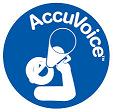Relationship Management
Accredited Consulting Service for Mr. Pilecek MBA BSEE Accredited Executive Consultant (AEC)
The Appleton Greene Accredited Consultant Service (ACS) for Relationship Management is provided by Mr. Pilecek and provides clients with four cost-effective and time-effective professional consultant solutions, enabling clients to engage professional support over a sustainable period of time, while being able to manage consultancy costs within a clearly defined monthly budget. All service contracts are for a fixed period of 12 months and are renewable annually by mutual agreement. Services can be upgraded at any time, subject to individual client requirements and consulting service availability. If you would like to place an order for the Appleton Greene Relationship Management service, please click on either the Bronze, Silver, Gold, or Platinum service boxes below in order to access the respective application forms. If you have any questions or would like further information about this service, please CLICK HERE. A detailed information guide for this service is provided below and you can access this guide by scrolling down and clicking on the tabs beneath the service order application forms.
Bronze Client Service
Monthly cost: USD $1,000.00
Time limit: 5 hours per month
Contract period: 12 months
SERVICE FEATURES
Bronze service includes:
01. Email support
02. Telephone support
03. Questions & answers
04. Professional advice
05. Communication management
To apply – CLICK HERE

Silver Client Service
Monthly cost: USD $2,000.00
Time limit: 10 hours per month
Contract period: 12 months
SERVICE FEATURES
Bronze service plus
01. Research analysis
02. Management analysis
03. Performance analysis
04. Business process analysis
05. Training analysis
To apply – CLICK HERE
Gold Client Service
Monthly cost: USD $3,000.00
Time limit: 15 hours per month
Contract period: 12 months
SERVICE FEATURES
Bronze/Silver service plus
01. Management interviews
02. Evaluation and assessment
03. Performance improvement
04. Business process improvement
05. Management training
To apply – CLICK HERE
Consultant profile
Mr Pilecek is an approved Executive Consultant at Appleton Greene and he has experience in customer service, e-business and marketing. He has achieved a Master in Business Administration and a Bachelor of Science in Electrical Engineering. He has industry experience within the following sectors: Healthcare; Government; Banking & Financial Services; Manufacturing and Retail. He has had commercial experience within the following countries: United States of America and Canada, or more specifically within the following cities: New York City NY; Philadelphia PA; Washington DC; Boston MA and Toronto. His service skills incorporate: strategic analysis; business development; CRM solutions; self-service applications and project management.
To request further information about Mr. Pilecek through Appleton Greene, please CLICK HERE

Executive summary
Relationship Management
Following 20 years of AT&T/ Bell Labs experience in development of very large business systems, forecasting and producing interactive video discs for training/ marketing, other common carrier facility requirements, providing quality management services and producing interactive video discs for training/ marketing, about 1988 began providing solutions for AT&T customers’ integrated call center solutions. From there, (about 1991), migrated to product management of AT&T’s (later Lucent, then Avaya )line of speech enabled self-service (IVR) products and together with channel management of a select group of integrators who provided self, and assisted service solutions. From there, evolved into solutions and technology planning for Customer Relationship Management (CRM) where I performed market research in every corner and aspect of the call center/ CRM global markets to ascertain the market potential of my concept leading to an Avaya CRM Central product which connected the event driven enterprise front end to responsible process oriented functional enterprise areas, even extending into the extended enterprise (supply chain) itself.
Service Methodology
For customer-centric enterprises including Healthcare, Government, Finance, Manufacturing, Retail and others, located in the major Northeast USA metropolises of New York City, Philadelphia, Boston, Washington DC and others such as Chicago, San Francisco and Houston, facilitate client organization’s creation, design, development and improvement of Customer Relationship Management (CRM) processes and technology deployments of contact centers, voice self-service, speech recognition, web services and mobility applications to optimize their Key Corporate Objectives in presenting their brand, providing an exemplary customer experience, extending marketplace reach and positively impacting their financials and Key Performance Indicators. For each client, produce an agreed-upon framework report that will serve as one of the needed resources for customer implementation of a world–class CRM inbound / outbound contact center (voice, speech recognition and verification, web, video, email or sms texting) agent assisted or automated self-service capability for customers/ citizens/ clients/ employees of commercial, healthcare or governmental enterprises. Methodology uses the scientific process of observation, interpretation, analysis, clarification and prediction and control, working with the customer CRM and other enterprise departmental staff at multiple levels to collect input. This input will then be synthesized into a framework report which addresses proposed organization structure, processes and interfaces: Review and study workgroup processes, tools, data, systems and complaints; Review key documents, observe and Interview customer facing staff, observe workflow/ processes procedures/ interfaces and contact transfers within and between groups, agencies and stake holders. Facilitate meetings and interviews of managers and supervisors to identify and discuss issues, organization, work routing, staffing/ training, reports expectations of CRM services.
For each client, develop key program objectives. Vision: Apply business practices and principles to establish a vision; Use business management principles to plan implementation; Perform ‘cost justification’ analysis of indicated projects; Identify and leverage risk/opportunity trade-offs; Provide financial projections to evaluate and prioritize projects and Forecast an annual operating budget for the venture. Customer Relationship Management: Apply Customer Relationship Management techniques to improve customer relationships; Identify the dynamics and economics of customer acquisition, retention, value, and access; Align customer contacts and experience with the organization’s customer segmentation strategy; Identify and quantify customer expectations and related business drivers; Identify the fundamental components of delivering a positive customer experience; Evaluate the effectiveness of service delivery and the impact on customer satisfaction; Propose tools and methods for measurement of user satisfaction; Use root cause analysis to Identify key contributors to areas of customer dis-satisfaction; Establish contact center mechanisms for capturing and leveraging customer feedback; Develop strategies to manage and improve the customer experience; Contribute to the organization’s customer service strategies and business planning process; Propose the best suited operational model for meeting customer needs; Optimize user experience by aligning resources, processes, and technologies
Establish an S Corporation for the consulting business, Establish funding sources and banking relationships and Setup an Office with appropriate computer tools to administer the business including accounting system and customer relationship management system: Define the services being offered; Determine and employ channels of distribution; Generate a marketing plan; Develop collateral; Develop orderly business processes, including QMS; Only as needed, hire admin help and Nail down quarterly revenue objectives.
Quarterly review of business’s performance against metrics: Existing clients – evaluate satisfaction with services [based on channel input or quality surveys]; Existing clients – current CRM projects – based on rendered services; Existing clients – completed CRM projects – success against their selected CRM project goals; Number of new clients; Number of new Prospects and Leads; Quarterly revenue of business; Quarterly profit of business; Number of complaints about services rendered; Number of resolved complaints and Number of new products or services being offered
Service Options
Companies can elect whether they just require Appleton Greene for advice and support with the Bronze Client Service, for research and performance analysis with the Silver Client Service, for facilitating departmental workshops with the Gold Client Service, or for complete process planning, development, implementation, management and review, with the Platinum Client Service. Ultimately, there is a service to suit every situation and every budget and clients can elect to either upgrade or downgrade from one service to another as and when required, providing complete flexibility in order to ensure that the right level of support is available over a sustainable period of time, enabling the organization to compensate for any prescriptive or emergent changes relating to: Customer Service; E-business; Finance; Globalization; Human Resources; Information Technology; Legal; Management; Marketing; or Production.
Service Mission
The drivers of an ongoing and ever increasing global requirement for automated and assisted CRM services include great population growth, aging of most of the world’s populations together with skyrocketing demand and costs for healthcare delivery, rapidly increasing scarcity of all resources around the globe, heightened and burgeoning competition from globalization, exploding efficiencies and requirements to reduce costs and to do more with less, and so forth. All humanity would like one on one interactions. No one can afford to continue that way, inevitably new ways of conducting business are, and will continue to be deployed while the necessity of engaging loyal constituents continues. CRM technology is a strong contributor, part of the Solution for these challenges. I envision where CRM is further enabled by the marriage of more intelligence with evermore sophisticated, elegant and convenient delivery mechanisms to do an increasingly better job of Customer Relationship Management – no matter what the enterprise or mission or services delivery entails.

Service objectives
The following list represents the Key Service Objectives (KSO) for the Appleton Greene Relationship Management service.
- Strategic Visioning
Multilevel strategic visioning is a planned, structured interview process using proprietary tools customized to the Client’s unique circumstances. Depending on the complexity of the situation, this may be accomplished in short-duration telephone interviews on up to multiday, multi-group onsite sessions. Regardless of the interview(s) media, the goal is to elicit the Client’s desirous direction whether that be for maximizing their customers’ experience, integrating their organizations and systems to better support the customer experience, modernizing an existing call center, or deploying a new call center, transforming their customers interactions into some self-service modality or normalizing their customers experience across organization, channel, customer lifecycle or process. Interview content is recorded, analyzed and shaped into the strategy that will best satisfy the Client’s vision, mission and goals as regards their customers’ needs and desires. - Solution Discovery
Once the vision is in place, and agreed-upon, then organizational, process, environment, technology and application solutions will be explored as they would support the strategy. This is a multidimensional effort in that it would be usual for many supportive solutions to become apparent to the Executive – Client – Consultant team. These would need to be described, evaluated and prioritized so that the most valuable solutions are selected in their order of timely benefit to the client organization. - Solution Justification
Part of the above mentioned selection process usually involves business planning and/ or justification analysis to reasonably arrive at the ‘last and best’ selection and phases for bringing the strategy to life via the selected solutions. The metrics for justification include how well the solution fits the strategy, financial and non-financial benefit for the Client and their customers, employees and stakeholders. Besides involving considerable calculations, this involves suitable expression to achieve buy-in from all the key players whether that be through executive summary narratives, presentations, graphical projections and so forth. The goal is to attain a ‘green light’ from the client for going to the next step. - Solution Design
Solution Design answers the questions of how do we want to put this together, how can we overcome technical integration challenges, how can we make it work, what pieces are required, which of those do we already have, do we make or buy the other parts, how do we get it serviced and what are the costs, particularly our internal resource costs and total cost of ownership [of the solution] over the projected lifetime? This is a team effort which requires the knowledge and experience of many different kinds of people. Engineering, Marketing, Business, Sales, Legal people must work together and across boundaries and learn to understand each other’s language and business rules. Having been part of such teams since assembling content/ applications for interactive video disks in the 80s, large business systems in the 70s and secret military systems in the 60s, my role would be as a guide and a resource, wherein your team can leverage my knowledge and experience. - Implementation Planning
OK, so there is an accepted, signed Statement of Work and Design Document for the solution(s) that support the strategy. Now what about all the moving parts for the Solution(s)? And very important, what about the surround, warranty, service level commitments (SLAs), customers’ deadlines, project schedules and plans, testing plans, quality control, business reports, equipment platforms – not just the building of the solution itself. This needs to be outlined at a high level before the next step of identifying and engaging the internal and external resources needed to build the total solution(s).

Achievements
AT&T
My pre-divestiture AT&T experiences included: IT support of the AT&T Long Lines, Business Information Systems network modelling; Other Common Carrier (e.g. MCI, Sprint) facility forecasting; Data Center planning spinoff of a Yellow Pages subsidiary; Defined 1st Automated Fingerprint Identification System [AFIS]; Produced multimedia Interactive Video Discs; Sales of manufacturing Quality Management Services and Selling support for large integrated call center solutions. To gain hands on selling experience during this period, took second jobs selling direct to consumers [Cable TV, Wedding Services, Heating Ventilation and Air Conditioning]. Business software intellectual property and contract sub-specialty expertise grew from a college business law course together with an AT&T contract management course combined with 20 years of earlier software development experience and many hours working together with AT&T Corporate Law and Intellectual Property staff. Recent post-divestiture projects included: Marketing & contract work for an AT&T self-service system sale to State of Oklahoma and Business Development work for AT&T system sale to City of Chicago, water services
Avaya
As a Member of Technical Staff (MTS) at Bell Laboratories, I worked in a variety of technical and managerial roles, for over a decade, on the largest non-military application development to that date. The project involved over a thousand people working on an integrated application to serve the Regional Bell Operating Companies (RBOCs) need for real time assignment of facilities to satisfy orders from residential and business Customers of all the RBOCs. This effort involved significant people and technical challenges as each of the many RBOCs did this business their own way. The underlying design and development work of this effort, known as BISCUS/ FACS [Business Information Systems Facilities Assignment and Customer Service] underlies even today’s processes for accomplishing this task which is needed to be performed by any communications services company. Lucent Technologies, Inc. work efforts included: Channel Management of a new Lucent ISV channel; Innovation of new voice self-service application products; Interactive Voice Response (IVR) Product Management Team [new release/ features]; Financial/ Banking specific IVR products [using emerging industry standard interfaces]; Call/ Contact Center apps. e.g. Speaker Verification for Authentication/ Entitlement and Solution and Technology Planning e.g. multimedia IVR/ precursor to multimedia web. At Avaya Inc., contributions included: . Solutions and Technology Planning of Contact Center products e.g. demo of multimedia Real Estate walk-throughs – circa 1993; Research/ synthesis of global demand for Call Center products; Definition and prototype product called CRM Central, an event driven process integration of contacts to the center combined with workflow throughout the enterprise and supply chain; Patent US7177316, Methods and Devices for providing Links to Experts and Business Development large partnering development for CRM Central Avaya product
Accuvoice Inc.
At Accuvoice Inc., serving as Marketing and Alliances Director and Senior Consultant, I worked as a team member to facilitate and bring to closure, many dozens of Contact Center, Self-Service, Inbound and Outbound, Voice or Speech, Application Solutions for Avaya, AT&T and other Business Partners’ customers. These team efforts, most-often directed by the CEO, Ms. Maralee Pope, resulted in millions of dollars of sales over fifteen years. Addressed markets included Healthcare, Government, Finance, Manufacturing, Retail, Utilities, Insurance Entertainment, Hospitality, Transportation and others. As the Senior User Interface Consultant, lead and participated in consultative Client – Accuvoice team efforts to define client applications, persona and speech and/ or touch tone interfaces. Over those years, served as primary originator of thousands of marketing and selling documents such as RFI/ RFP responses, Statements of Work (SOWs), Contracts, Pricing Calculations, Presentations, Brochures, White Papers and Trade Show Booth Promotions.
City and County of San Francisco
The City and County of San Francisco-Department of Telecommunication and Information Systems (CCSF-DTIS) and their client, the San Francisco Public Utility Commission – Customer Service Bureau (SFPUC-CSB) commissioned Avaya and Accuvoice Inc. to improve customer service by developing/ deploying a Directed- Dialog, Natural Language IVR Application for operation on their Avaya interactive response self-service system. Working closely with the SFPUC-CSB staff script design team, created U.S. English, professional speech Natural Language applications including Call Routing, Account Inquiry, Account Status, Copy of Last Bill Request, Credit Card Payment, and custom Reports. Upon completion of the design, development, project management, tuning, testing, and documentation, the system was successfully deployed, without any failure events. Subsequently, CCSF was awarded recognition for this work at a national SpeechTek event in NYC. The application has operated without failure over a number of years and is currently being upgraded to a later version Avaya self-service platform
Centers for Medicare & Medicaid
About ten years ago, one of the Intermediary Medicare Part B processors [now called MACs], together with Accuvoice Inc., submitted an unsolicited proposal to CMS for An 18 month pilot project to examine the positive effects of a guided dialog, speech recognition self-service claims processing system to provide: (1) Responses to Provider Inquiries and (2) Improvement in the automated/ self-service call handle rate. At that time, this MAC was processing 10 percent of all Part B claims via six dedicated call centers. In the functional area that was handling Part B provider calls, they were experiencing a pervasive, systemic problem wherein the number of incoming calls were increasing while the number of calls handled through traditional touch tone automation were declining resulting in an ever-increasing workload shift to the customer service representative. The proposed, and later CMS approved, pilot program English and Spanish language solution was to address the input part of the self-service provider/ B claims processing problem by substituting guided dialog, speech recognition technology for CSR-hours and exhibit high-order economies of scale. Together with this MACs script team, I created and refined the required multilingual speech recognition script and associated high level application design. Accuvoice Engineering designed and unit tested the speech application. When this MACs script team initially received the application for system/ user-acceptance testing, there were numerous troubles and the automation handle rate was only slightly better than the original touch tone. At that juncture, the CEO assembled an internal Accuvoice team, including myself, to perform multiple tuning exercises to improve the application. One key challenge of speech recognition is that it doesn’t handle alphanumeric identifiers well and the recognition decreases substantially with the length of the identifier. Another challenge is that the vendor’s recognizer was not tuned to the specific Spanish speaking female population employed by the various Physician’s offices. The CEO-led Accuvoice team implemented some innovative quantitative and qualitative techniques to successfully increase the automation handle rate to an amazing 92%. Since that initial foray, CMS MACs, of necessity, are using a variety of new technologies in order to keep up with the ever increasing growth of needed Part B claims processing.
More detailed achievements, references and testimonials are confidentially available to clients upon request.

Industries
This service is primarily available to the following industry sectors:
Healthcare
The US Healthcare Industry is big, challenged, increasingly expensive and rapidly changing. Its Annual Revenue is $1.668 Trillion. There are 784,626 US Healthcare companies that employ 16,792,074 people. Challenges include increasing demand for services due to the greying of the population, about a 35% shortage in hospital beds, insufficient number of General Practitioners, nearly incurable infectious diseases due to drug resistant bacteria, high hospital death rate, skyrocketing costs for care and for pharmaceuticals, inflationary year/ year costs to deliver healthcare [whether private or publicly funded, payment/ collection/ patient-bankruptcy problems, increased / increasing use of effective but very high cost diagnostic technologies, uninsured/ uninsurable patients, shortcomings in communication of medical patient information, preventable deaths due to poor lifestyle choices, poor outcomes e.g. longevity less than comparable countries and various other quality and effectiveness shortcomings. Federal and Local Government, Healthcare Professionals, Technologists, Insurers, Administrators, Hospitals and Pharmaceutical Companies are responding to these challenges on multiple fronts. Recent legislation includes the Health Insurance Portability and Accountability (HIPAA) act for protection of private patient information, the Health Information Technology for Economic and Clinical Health (HITECH) Act to stimulate broad implementation of EHR (Electronic Health Record) information and its meaningful use, and the Patient Protection and Affordable Care Act (PPACA) with its health insurance mandate requiring all citizens to purchase health insurance Providers and hospitals are working to increase the efficiency of Healthcare Delivery with new models. Many previously private practice physicians are now employed by hospitals as Hospitalists. Electronic Health Records (EHRs) are being standardized within large groups that include general practitioners, hospitals, specialists and laboratories of those groups and across groups via national HIEs (Health Information Exchanges). There are emerging electronic models such as web delivered Healthcare [WEB MD] and centralized intensive care units that support multiple hospitals via a central core of ICU specialists using telecommunications to guide hospital Internists. There are emerging Accountable Care Organizations (ACOs) being piloted by CMS {Centers for Medicare and Medicaid] for reimbursement of positive medical outcomes versus the fee for services model. Drugstore chains are entering the healthcare channel with kiosk delivery of general healthcare services such as inoculations. Technology has/ is being deployed in clinical/ administrative functions to improve efficiencies, effectiveness, outcomes and financial returns throughout the system. In the clinical arena, Biologics and Genetics are presenting a new approach to defeating disease. Physicians are recording their notes using speech recognition for entry into patient EHRs. Networks communicate bedside data to centralized stations for observation/ control of patient welfare. Smartphones are being used for myriad healthcare purposes, including wearables that track personal medical stats. For administration, the opportunities are to increase efficiency within the healthcare community via better communication/ use of information. One example is HIMMs {Health Information Management] systems using standardized interfaces such as HL7 for processes that use a centralized data base e.g. Prescription Refill. My opportunity in this milieu had been with a provider of self-service solutions for providing/ managing inpatient and ambulatory care and to provide support and health services education. Based on the dynamics already in progress, the inaugural report of the AHA Committee on Performance Improvement details conducted exploratory interviews and analyzed the results to identify must-do, priority strategies and core organizational competencies organizations should establish to remain successful in this time of sweeping change. Must-Do Strategies to Succeed in the Future: Aligning hospitals, physicians and other providers across the care continuum; Using evidence-based practices to improve quality and patient safety; Improving efficiency through productivity and financial management; Developing integrated information systems; Joining and growing integrated provider networks and care systems; Educating and engaging employees and physicians to create leaders; Strengthening finances to facilitate reinvestment and innovation; Partnering with payers and Advancing through scenario-based strategic, financial and operational planning. Organizations on path to implement the above must-do strategies should achieve the following competencies: Organizational Core Competencies; Design and implementation of patient-centered, integrated care; Creation of accountable governance and leadership; Strategic planning in an unstable environment; Internal and external collaboration; Financial stewardship and enterprise risk management; Engagement of full employee potential and Collection and utilization of electronic data for performance improvement. The need for such strategic thinking and doing is undeniable, however; there is one other element that I’ve observed is needed. That element is compassion and caring which is the foundation of our healthcare efforts and which the dedicated people in these professions deliver on a daily basis1
Government
The recent recession forced local governments to scale back on IT costs and staffing. This drove movement to hosted private and public cloud services facilitating CIOs supporting departments with services from Amazon/ Google but still keeping critical IT assets behind locked doors. 2015 investment of $6.3 billion was projected for civic engagement technologies in 2015. Leading local government initiatives selected by the Center for Digital Government include: States [Top States using tech to serve citizens: PA, GA, OH, MI, MO, VA, UT, and CT]. Georgia: centralize state IT and transition to the cloud through outsourcing. Pennsylvania: seven-year, $681 million hybrid cloud-services, centralized HR saving $1M/ year. New York: self-dispatch emergency units to scene, public health mobile app, public health dashboard. Counties are continually becoming more sophisticated in their approach to technology-based service delivery. They are adding professional staff with specific expertise in security, data management and innovation and embracing new technology to help them operate more efficiently. Fairfax County was selected as the leading US County. My efforts had included design/ deployment of an award-winning, speech recognition, self-serviceSystem for the City and County of San Francisco, same for City of Houston Courts and many contributions to the Cook County citizen services, self-service ecosystem. Some top cities projects are: Boston: 1,000 acre Innovation District [Internet, restaurant/ shops) to lure hi tech start-ups; Winston-Salem: WinstonNet, a community program aimed at closing the digital divide and Dublin, Ohio: social media presence, community engagement tools, systematic approach to GIS use. Technology advancements are changing the way local government responds to citizens, however; it also brings challenges and questions such as for those that are stuck managing legacy systems that won’t ever be migrated to the cloud. State and local officials nationwide are eager to embrace digital strategies for core operations and new citizen services, according to a recent survey. New concepts are beginning to take hold in local government too. More than half of county respondents said they were considering Internet of Everything (IoE) technologies in their strategic plans. A few of the 140 futuristic initiatives identified by this survey include: Majority of IT Infrastructure Is Headed to the Cloud Michigan Orgs. in Oahu, to Deploy Hi-Tech Energy-Storage Systems Hawaii; Young Mayor Embraces ‘Smart City’ Solutions Indiana [South Bend]; Unveils App to Keep Up with Maintenance Illinois [Bloomington]; Turning to Data for Suburban Revitalization Ohio [Northeast]; Pilot of Zero-Net Energy Homes California [Fontana]; Data Programs Revolutionize Cincinnati Government Ohio; Will San Jose Become California’s First Google Fiber City? California X-Ray Tech Reveals Health of California’s Forests California; San Francisco 311 App Helps Homeless Population California; State Moves Toward Customer-Centric Government Michigan; All Court Documents Now Online Texas; The future for digital transformation of government will need to be both unplanned and opportunistic and yet be steered by a planned strategic approach.
Banking & Financial Services
In 2014 in contrast to the earlier scandals and recent economic crisis, Financial markets in the United States continue to be the largest and most liquid in the world. In 2014, Finance, including insurance, is 7.2 percent (or $1.26 trillion) of U.S. gross domestic product. Financial services and products facilitate and finance the export of U.S. manufactured goods and agricultural products. Available information from 2011 shows that the US exported $92.5 billion in financial services and had a $23.0 billion surplus in financial services and insurance trade (excluding re-insurance, the financial services and insurance sectors had a surplus of $59.5 billion.) The financial services and insurance sectors employed 5.99 million people in 2014. According to the U.S. Department of Labor, 888,600 people were employed in the securities and investment sector at the end of 2014. In 2012, at least 132 of Fortune’s Global 500 companies chose to locate their headquarters in the US to take advantage of its creative, competitive, and comprehensive financial services sector. The industry offers the greatest array of financial instruments and products to allow consumers to manage risk, create wealth, and meet financial needs. As of the end of 2012, the U.S. banking system had $14.45 trillion in assets. It supports the world’s largest economy with the greatest diversity in banking institutions and concentration of private credit. In the second quarter of 2013, earnings grew by 23 percent to $42.3 billion, marking the 16th consecutive quarter of rising earnings. U.S. asset managers are currently meeting the pension management needs of over 55 percent of the global retirement market. Total U.S. pension assets were $18.9 trillion at the end of 2012. Moreover, if insurance assets and mutual funds are included, U.S. asset managers held more than $39.6 trillion of long-term conventional assets under management, or 45% of the global total for these funds. 2012 insurance industry’s net premiums written totalled approximately $1.27 billion. According to the Swiss Reinsurance Company, premiums recorded by life and health insurers accounted for 45 percent, and premiums by property and casualty insurers accounted for 55 percent. Additionally, about one-third of all reinsurance sold worldwide is bought by U.S. firms. In 2012, venture capital-backed companies employed more than 12 million people and generated nearly $3 trillion in revenue. Respectively, these figures accounted for 11 percent of private sector employment and annually VC-backed companies have generated revenue equal to 21 percent of U.S. GDP. My contributions for the financial services industry include program offerings of banking industry self-service solutions, one of the first speech self-service retail banking solutions, a decade of work with a southern property and casualty insurer and providing support for a nationwide speech self-service solution for one of the three largest US insurance companies. According to a PwC report entitled Retail Banking 2020 – Evolution or Revolution. Yet, despite the emergence of new competitors and models, we believe the traditional bank has a bright future – the fundamental concept of a trusted institution acting as a store of value, a source of finance and as a facilitator of transactions, is not about to change. Banks are reinventing themselves to thrive in a post-financial crisis climate with a focus on profitability rather than revenues. They are developing new products and more flexible business models for the future in order to deliver attractive investor returns even with volatile global markets. To gain an edge in today’s competitive landscape, retail banks must drive customer focus by discerning remaining possibilities and doing everything they can to satisfy customers for whom convenience and personalized services have become the norm. Recent commitments are to meet customer expectations by employing new technological solutions such as data analytics capabilities. Financial institutions expanded their use of technical solutions by tripling their 2012 – 2014 FinTech investment from $4.05B to $12.21B. PwC survey results indicate that 2020 priorities foreseen by global banking executives include: customer-centric business model, optimized distribution, information advantage, enabling innovation and proactively managing risks and regulation. In the banking industry, connecting consistently with customers will require that banks understand the demographics of their markets, including the characteristics that define their best customers, and knowing which products and services they are willing to pay for, reads KPMG’s banking outlook. It also means developing the right distribution channels, as consumers increasingly use more than one channel. Financial services institutions are applying business intelligence (BI) advanced analytics to create competitive advantage for their organization by leveraging information assets to gain a comprehensive understanding of markets, customers, channels, products, regulations, competitors, suppliers and employees. Insights are derived regarding long term customer profitability, identity of most profitable customers, effective account retention strategies and raising the lifetime value of their customer base. Predictive analytics tools are used to generate profit and loss statements at the individual account level. Aggregated insights are delivered across the organization to optimize customer interactions, determine the most profitable pricing decisions and take actions that increase customer satisfaction, retention, profitability and which facilitate risk management for compliance with increased oversight from global, regional and national regulations such as the Dodd-Frank Financial Reform Act and Basel III. Internal analytics goals are to improve profitability by aligning risk, capital and performance management objectives, and to instil greater confidence among investors, customers and LOBs. Banking industry regulation, technology, demographics, customer expectations, non-traditional competition and legacy business model challenges are manifest. Banking needs to rebuild around the customer to win in 2020 and to deploy forward looking strategies that apply cost- justified technology solutions to modernize how business gets done.
Manufacturing
The US emerged from WWII as the dominant manufacturing country in the world. During the 1970’s there began a see widening trade imbalance due in part to the change from a fixed exchange rate to a floating rate, as well as new trade agreements. The value of goods imported into the country began to outpace the value of exports. For decades, the share of the labor force employed in manufacturing has been on a gradual decline as more Americans have taken jobs in service-based industries. Some believe that such a decline in manufacturing is not a cause for concern because as a country becomes wealthier, the share of services increases with a corresponding decrease in the share of goods. In 1960, foreign goods made up just 8% of Americans’ purchases. Today, nearly 60 percent of everything we buy is made overseas. Important contributors to these changes were dramatic improvement by global competitors, particularly the BRIC countries and Japan, in manufacturing efficiencies with their adaptations of Quality Manufacturing Systems, Just In Time inventory management, beginning use of robotics for manufacturing and increasing global and domestic Demand. Nonetheless, US productivity continues to grow based on new technology resulting in fewer workers needed on the assembly line. During this period of rapid changes in manufacturing, my personal involvement included: 1978 – IBM CIM Model in college classes [Associate Professor]; 1986 – AT&T Manufacturing Suppliers specifications for manufacture; 1987 – AT&T QMS – Quality Program Evaluations of AT&T manufacturer/ suppliers; 1996 – Lucent – IVR Product Management – Denver factory telecom equipment cost/ process evaluation/ assessment; 1999 – Lucent Tokyo – manufacturing process study with SONY and Motorola; 2000 – Madrid – International exchange/ review Telefonica manufacturing and other processes; 2001 – SAP/ other Enterprise Resource Planning (ERP) business development partnering and 2002 – SAP Specialist ERP Configuration Consultants supplier. One important US technology for manufacturing evolved from the IBM integrated information Model for Computer Integrated Manufacturing [CIM] which included functionality for manufacturing engineering, production planning, plant operations, physical distribution and more. SAP ERP software actualized this model into the SAP ERP – CIM related manufacturing software capabilities deployed in large manufacturing enterprises around the world. Other technologies that have increased US manufacturing efficiencies are EDI {Electronic Data Interchange} standards for exchanging supply-chain data, statistical quality control, CNC numerically programmed machines, JIT Just In Time manufacturing, robotics, distributed manufacturing and CAD/ CAM design. In contrast to the emergence of China as the world’s current largest manufacturing economy, the United States is still the world’s second largest manufacturer with manufacturing being a very small portion of the entire U.S economy (as compared to most other countries). Dues to continuous productivity improvements based on new technology, The United States leads the world in airplane and other highly skilled manufacturing, 11 million Americans continue to get their pay-checks from working in factories, and the U.S is the producer of 21 percent of the world’s manufacturing output, a number which has remained unchanged for the last 40 years. Public Law 107–277—NOV. 5, 2002, titled “Enterprise Integration Act of 2002” authorized the National Institute of Standards and Technology [NIST} to work with major manufacturing industries on an initiative of standards development and implementation for electronic enterprise integration. The Congress identified that over 90 percent of United States companies engaged in manufacturing are small- and medium-sized businesses, most of these manufacturers produce goods for assemblage into products of large companies, the emergence of the World Wide Web and the promulgation of international standards for product data exchange, greatly accelerated the movement toward electronically integrated supply chains during the last half of the 1990’s, European and Asian countries are investing heavily in electronic enterprise standards development, and in preparing their smaller manufacturers to do business in the new environment which could give overseas companies a major competitive advantage, the National Institute of Standards and Technology, because of the electronic commerce expertise in its laboratories and quality program, its long history of working cooperatively with manufacturers, and the nationwide reach of its manufacturing extension program, is in a unique position to help United States large and smaller manufacturers alike in their responses to this challenge and therefore, in the national interest for NIST to accelerate its effort in helping industry develop standards and enterprise integration processes that are necessary to increase efficiency and lower costs. Taken together with previously mentioned EDI, CIM, CNC machines, CAD/ CAM design, the realized utility of the WWW, robotics, additive manufacturing, Business Intelligence and Big Data analytics, web services and open architecture communication methodologies, the emergence of the Internet of Everything [IoT],the stage is set for the emergence of the Industrial Internet. The key elements of the Industrial Internet are Intelligent Machines to connect the world’s machines, facilities, fleets and networks with advanced sensors, controls and software applications, advanced Analytics that combine the power of physics-based analytics, predictive algorithms, automation and deep domain expertise and People at Work connecting people at work or on the move any time to support more intelligent design, operations, maintenance and higher service quality and safety that General Electric projects as an opportunity to grow global GDP share by 46% ( $32.3 Trillion ). Manufacturing’s share of the $41 Trillion part of that projected additional GDP growth.in the Advanced Economies such as the United States is anticipated to be about $6.1 Trillion. The reader of this summary may wish to reference a 52 page paper published by the Deloitt Press titled The Future of Manufacturing, Making Things in a Changing World for additional perspective. New types of jobs in futuristic industries are likely to raise our standards of living and improve quality of life such as the mobile phone applications economy which has employed 155,000 tech workers in the U.S. or the Facebook apps platform which has resulted in the employment of 53,434 third-party developers. Similarly, new manufacturing, defined by new materials, processes and complex integration of automated systems, will create new types of jobs with the one caveat being that the required workforce will need skills and education that differ from those required for yesteryear’s manufacturing.
Retail
Retail is the second-largest industry in the United States and generates $4.4 trillion in retail sales annually. This industry includes retail establishments in department and discount, fast food, apparel, restaurant, consumer electronics and entertainment, home improvement, home furnishings, catalog and mail order, groceries, drugstores and Rx, specialty and many other consumer goods and services areas. Competition among retailers is challenging retailers to gain and maintain a significant competitive advantage in every channel and retail space. Statistics indicate that profits can be increased by 25-125 percent just by retaining 5 percent more customers. Loyalty, guest, and personalized programs are an important means of acquiring and retaining customers. Driving Customer Loyalty is one of the challenges faced by the retail industry. Customer Loyalty is: making friends with customers because they enjoy your products and services; collecting information about their buying habits to better anticipate future purchase opportunities – personalizing the relationship to tailor their experience at each point of contact; interacting in a manner that recognizes their feelings, tastes, needs and desires; maintaining privacy through correct handling of personal data and investment in branding and infusing the retailer’s brand with qualities where customers are able to relate with it and form emotional attachments much like they would with people. Consumer Services that support Customer Loyalty are provided at all points of contact including point of sale (POS) and remotely via telephone, WEB and email. Because of the high cost of person – person phone contact (@ $1.50 per minute), automated touch tone phone interactions have been widely deployed and are rapidly being upgraded to natural speech interactions (@ $.25 -$.35 per minute). Because speech is a natural way of communicating, it is favored as a preferred means of contact. I’ve been privileged to work with several retail organizations including the Meijer grocery chain, Kroger, The Limited Brands, Lenox, Officemax [OfficeDepot], and RadioShack on their voice self-service customer service solutions. Measured by revenue, the U.S. is the undisputed leader of the retail industry. Walmart is not only the largest global retailer; it is also the largest company of any kind in the world. According to the 2015 Global Powers of Retailing report, 76 of the largest retailing companies in the world are based in the U.S. Some of the largest U.S. based retail chains operate domestically, but a growing number of them are establishing international presence as well. US Retail sales were estimated to be $24 trillion in 2015. The Internet E-Retailing channel has captured about 12% of the retail market for hard and soft goods. Amazon.com has emerged as the largest competitor to the ‘brick and mortar’ retail sector while Wal-Mart, Apple, Costco, Macy’s and other traditional retailers have their own E-Retailer channels. A PWC – Kantar Retail report titled “Retailing 2020: Winning in a polarized world” anticipates that the 2020 retail landscape will be shaped by retailers leveraging increasingly complex operational, financial, and brand models. Their projection is that Retailers and suppliers, will need to address and manage the complexity and diversity of the ’retail realities’ that make the market challenging. Speed of technological advancements, globalization, and ways to leverage information are some of the drivers that may lead to a more consumer-centric landscape. Key US retail change drivers include: Speed of technological changes [internet communications enabling faster/ smarter innovation ecosystem]; Shifts in US demographics and shopper behavior [diversification changing expectations of retail industry]; Ripple effects of the changing global shopper, [global middle class consumption demands same as U.S.]; Global procurement economics, [seamless global product sourcing]; Transparency and knowledge-centric shopping [transparency, automated value setting, personal pricing]; Challenges to retailer economic models [manage square foot profit erosion]. Key trends expected to impact the future in US retailing: Consumer-driven supply chain, [Analytics discernment of demand channel signals]; Growth fragmentation of US retail channels [Rise of non-traditional store formats e.g. pop-up stores]. Globalization: Why retail growth is coming from “unfamiliar” markets [weak growth requires new markets]. From multichannel to Omni channel: [fully integrated brand retailing]; Consumer-driven transparency of everything [shoppers see inner workings of entire supply chain]; Consumer-centric retailing [retailers need to get as close to the consumer as possible]. Retailers will continue to integrate themselves seamlessly into their shopper‘s replenishment processes, and best-in-class retailers will find ways to act as a bridge between this real-time consumer data and the rest of the supply chain. The implications for a retailer‘s system architecture are significant: leading retailers in the future will need to be the fastest data translators able to create value for their trading partners by aggregating and redistributing real-time consumer information in useful ways.
Locations
This service is primarily available within the following locations:
New York NY
New York City is the communications/ entertainment capital of the world. Its 20 million people are informed by more than 200 newspapers including the highly influential New York Times, Newsday, and the New York Daily News, 8 television stations including the CBS, ABC, and NBC networks, hundreds of AM and FM radio stations and New York Online channels with venues from the Manhattan Chamber of Commerce to the Convention & Visitors Bureau and Port Authority of New York and NJ. Its economy is focused on service and financial industries and is at the core of national/ international financial dealings and the global center of corporate headquarters in finance and services, media, entertainment and telecommunications, manufacturing, and trade. NYC leads the US in the number of Fortune 500 and 1000 companies headquartered there. The City has more printing plants than anywhere else in the country. Its clothing industry factories employ more than 100,000 people. The high-tech and “new media” industries of Silicon Alley account for $9.2 billion in City revenue. Growth is supported through the “Digital NYC: Wired to the World” program which provides affordable spaces with ready access to the Internet/ NYC’s hundreds of thousands of miles of installed fiber-optic cable. Life science R&D includes Pfizer’s NYC headquarters presence. Other leading industries are NYC tourism, 3 International Airports and television and film production facilities. New York City is the communications/ entertainment capital of the world. Its 20 million people are informed by more than 200 newspapers including the highly influential New York Times, Newsday, and the New York Daily News, 8 television stations including the CBS, ABC, and NBC networks, hundreds of AM and FM radio stations and New York Online channels with venues from the Manhattan Chamber of Commerce to the Convention & Visitors Bureau and Port Authority of New York and NJ. It’s economy is focused on service and financial industries and is at the core of national/ international financial dealings and the global center of corporate headquarters in finance and services, media, entertainment and telecommunications, manufacturing, and trade. NYC leads the US in the number of Fortune 500 and 1000 companies headquartered there. The City has more printing plants than anywhere else in the country. Its clothing industry factories employ more than 100,000 people. The high-tech and “new media” industries of Silicon Alley account for $9.2 billion in City revenue. Growth is supported through the “Digital NYC: Wired to the World” program which provides affordable spaces with ready access to the Internet/ NYC’s hundreds of thousands of miles of installed fiber-optic cable. Life science R&D includes Pfizer’s NYC headquarters presence. Other leading industries are NYC tourism, 3 International Airports and television and film production facilities. NYC is i)rebuilding the aged industrial waterfront areas of the five boroughs into desirable green destination locations for residents and visitors alike, ii) tapping the brain power/ proximity to advanced specialized supportive legal, financial and business resources solidifying a position as the Silicon Valley of bio-engineering and genetics medical sciences and iii) continuing to provide employment via a range of programs and initiatives for maintaining the City workforce as one of the world’s brightest and best pools of human capital in the sciences, engineering, arts, entertainment, publishing, finance, law and business. NYC has Programs for new and existing companies’ expansion into biotechnology, film production, and the recreation and tourism business. 62,000 new jobs have been created in the current timeframe. The City validates small businesses’ value with its Business Improvement Districts. Local programs assist businesses with locating real estate, accessing capital, reducing energy costs, finding skilled employees and lowering taxes. Businesses who relocate and renovate property in lower Manhattan can qualify for the Lower Manhattan Energy Program to reduce energy costs up to 45%. Manufacturers can get a tax credit for 3.4 % of money spent on utility costs. Empire State Development (ESD) helps businesses expand and create jobs. R&D specialty companies are eligible for 9 % tax credits on corporate facility taxes. The NYC Economic Development Corporation is working to restore and reenergize Lower Manhattan with tax incentives to encourage retail, commercial, and residential development.
Philadelphia PA
The Greater Philadelphia region is a major corporate center within the United States. Many companies have located or expanded facilities in the area. A major attraction is the area’s location at the central location in largest US market, ready access to commercial shipping, renowned medical, engineering, and high caliber educational institutions to supply talent for the area’s diverse range of commercial activity in chemicals, pharmaceuticals, office and computing equipment, telecommunications, instrumentation, bio-medical products, fabricated metal products, paper products, processed foods, clothing, petrochemicals and machinery. Philadelphia Center City continues to be the financial, governmental, and cultural hub of the region. All of these factors make Philadelphia an attractive place to live and work. The people of Philadelphia, excited about their City’s future, are
reinventing their home city with strategic initiatives such as the Comcast Innovation and Technology Center [Shining Towers], the Future City schools’ competition, Philadelphia library of the Future and Strategic vision for The Philadelphia Museum of Art, which is already one of the best in the nation. As much as any of us, Philadelphia is a work in process and it will be fun enjoying all of this as it unfolds.”
Washington DC
Metropolitan Washington, D.C. includes Arlington, Virginia, Alexandria, Virginia, Bethesda, Maryland, Frederick, Maryland, Gaithersburg, Maryland, Reston, Virginia, Rockville, Maryland and Silver Springs, Maryland. D.C. area population is about 658,893. Counting Commuters from MD and VA, the city’s workweek population swells to over a million. The DC metro area is the seventh-largest metropolitan statistical area in the country (about 6M) and has a growing, diversified economy with an increasing percentage of professional and business service jobs. The city hosts nearly 200 foreign embassies and headquarters of many international organizations, trade unions, non-profits, lobbying groups, etc. It has the largest science and engineering work force of any metropolitan area in the nation, is home to hundreds of major research universities etc. and is a top tourism and business conference center. At various times over the last two decades, I’ve done business development work with selected government agencies, prime contractors and high tech integrators. Currently, I’m positioning self-service CRM with the Social Security Administration (SSA) and selected primes towards SSA’s objective to increase the use of self-service options in lieu of the current overload being experienced by the SSA’s various field offices. As a former employee of Lucent and Avaya, DC area work had included secure telephony, IRS and Treasury RFP responses, a CMS (Centers for Medicare) pilot speech recognition project and demo to NASA on use of self-service CRM improve access to their several Visitor Centers. Washington DC will continue to have an economy which is strongly based on federal business and the vendor firms that provide the goods and services that the US’s largest customer requires. Because of that, its growth will be steady during good times and during economic downturns. On the other hand, DC area commerce is becoming more diversified and, thanks to various government initiatives, will be engaged in very interesting and important, forward-looking R&D essential to our economy. All DC headquartered organizations whether civilian agencies, military/ DoD [Department of Defense}services, or even the ‘surround’ of contractor/ vendor companies, will require ever-improving multi-channel, multi-media, multi-lingual assisted and automated “customer” services in order to satisfy their strategic and operational goals and objectives. As national demographics such as the ‘greying of America’ with its concomitant needs for medical and other social services unfold, Customer Relationship Management methods, processes and technology are essential to meeting the needs of our society
Boston MA
As the de facto unofficial capital of New England, Boston has a history of prosperity based on traditional businesses such as shipping, fisheries, light manufacturing, tourism and financial and healthcare services. The area has about 100 major healthcare institutions including such well known entities as Boston University, Boston Medical Center and Children’s Hospital. In banking and finance there are the headquarters for giants such as Fidelity, Sovereign Bank, Bank Santander and large Insurers headquartered there include Hanover Insurance Group and John Hancock. I’ve participated as a member of an AT&T team analysis of Hanover’s insurance company call center, been a technology exchange executive with Bank Santandar and been a guest of the city as a naval officer aboard the USS Leahy. Boston has survived the most recent financial crises and is back on a good growth curve. Being an intellectual center with many top notch healthcare and education institutions, Boston is an exciting place to be. Many of these organizations are either currently using Customer Relationship Management technology or would benefit from its deployment. Layered on top of the existing commercial sectors, Boston has an emerging high tech sector including such forward looking companies such as Boston Scientific, BOSE and more recently Aldebara Robotics (Americas Region), a subsidiary of Softbank, headquartered in Japan. Beyond being consumers of CRM capabilities, companies like this are also contributors to such fields and it would be both beneficial and exciting to have the opportunity to work with them.
Baltimore MD
Current Baltimore Metro Area population is 2.7 million. A quarter of the jobs in the Baltimore region are in science, technology, engineering and math, attributable to its extensive undergraduate and graduate schools. It is the 2nd largest seaport in the Mid-Atlantic with the Helen Delich Bentley Port of Baltimore ranked number one among U.S. ports for container berth productivity. Baltimore is headquarters of many US Departments and Agencies. The more notable include: GSA [General Services Administration], SSA [Social Security Administration], USDA [U.S. Dept. of Agriculture], DHS [U.S. Department of Health & Human Services], FDA [Food & Drug Administration], NIH [National Institutes of Health], HUD [U.S. Dept. of Housing & Urban Development], U.S. Dept. of the Interior, FBI [Federal Bureau of Investigation], Veterans’ Employment & Training Service, U.S. Dept. of the Treasury, IRS [Internal Revenue Service] and the VA/ VHA [U.S. Dept. of Veterans Affairs]/[Veterans Health Administration]. The SSA, VHA and IRS touch points with the Public include walk-in Field Offices, Call Centers, Web Sites, voice self-service and printed materials/ forms via the USPS. The challenged in providing citizen services are the exploding needs for services and decreasing budgets for providing those services. The SSA’s top strategic priority is use of self-service to alleviate field office traffic. Having worked with these Agencies, CRM [Customer Relationship Management] would help Government, Citizens and Departments to conduct business, cheaper, better, faster by using it to complete tasks required of the enterprise. As derivative of the Baltimore County Council Master Plan 2020 (adopted on November 15, 2010) the “OpenBaltimore” mayoral initiative for city government sharing of data with the public was adopted to provide for public access to City data sets, in an unprecedented way. The city’s constituents are enabled to collaborate with government in finding ways to improve service delivery and save money for taxpayers. Under OpenBaltimore, each department, has established a list of data sets that it maintains and identifies which are already available to the public and which are not. Each department is taking prompt steps to make data available exclusively through OpenBaltimore for public access so that Departments and Agencies can work with citizens on the development of applications that use the data to create useful service [CRM] applications for city residents and visitors. Directionally, the Master Plan aims to provide vibrant communities, an array of community services and land and water use that will assure ongoing and future economic vitality within a sustainable environment.
Clients
This service’s current clients or employers include:
AT&T
AT&T helps people connect with advanced mobile services, next-generation TV, high-speed Internet services and smart solutions for businesses. AT&T is setting the standard for delivering video when, where and how customers want it. With their acquisition of DIRECTV, combined with the AT&T U-verse TV service, they’re now the world’s largest pay TV provider with nationwide reach in the United States, plus 11 Latin American countries. AT&T provides advanced business services to nearly all of the Fortune 1000, as well as neighbourhood businesses around the country with solutions that help businesses in every industry serve their customers better. The company reports that they are working with top automakers and technology companies to make people’s lives easier. In 2014, AT&T averaged more than one patent per day from the bright technology and business employees of the AT&T Labs and Foundry centers. AT&T’s vision for our future world is a world where everything and everyone works together. AT&T claims 120.6 million customers being served by 243,620 employees generating 2013 consolidated revenues: of $128.8 billion. More than 99 percent of Americans are covered by the AT&T 4G LTE network and globally, AT&T has presence in more than 225 countries and territories. On the business side, AT&T has more than 3.5 million customers including many of the world’s largest corporations such as nearly all of the Fortune 1000.
Avaya
Bell Laboratories is a research and scientific development company that Alcatel-Lucent acquired from AT&T. Its US headquarters were located in Murray Hill, New Jersey. The historic laboratory originated in the late 19th century as the Volta Laboratory and Bureau created by Alexander Graham Bell and became a division of the American Telephone & Telegraph Company (AT&T Corporation). Researchers working at Bell Labs are credited with the development of radio astronomy, the transistor, the laser, the charge-coupled device (CCD), information theory, the UNIX operating system and the C and C++ programming languages. Eight Nobel Prizes have been awarded for Bell Labs work. Lucent Technologies, Inc. established on September 30, 1996 was an American multinational AT&T telecommunications equipment company established through the divestiture of the former AT&T Technologies business unit of AT&T Corporation, which included Western Electric and Bell Labs. Alcatel-Lucent was formed via merger with Alcatel SA of France on Dec. 1, 2006. Avaya Inc. is an American multinational technology company headquartered in Santa Clara, California that provides multi-channel business communication solutions for customer and team engagement. Avaya currently services organizations at over 1 million customer locations worldwide with operations divided globally in 5 regions Asia Pacific; Caribbean, Latin America; Europe, Middle East and Africa (MEA); and the USA and Canada
Accuvoice Inc.
Accuvoice is an Avaya Platinum level developer of Self-Service applications for the Avaya Voice Portal and other in-place Avaya and Nortel IVR systems. Projects are professionally managed to assure on time, on budget implementation of these packaged and custom application solutions. Accuvoice teams with Business Partners such as AT&T, to assure switch, network and telephony integration, and provides host and data source connectivity & middleware integration for various data processing environments. Solutions from Accuvoice feature multilingual touch tone and/or speech recognition, professionally designed, translated and studio-recorded caller interfaces, integrated administration and customer training, consultation and comprehensive solution support. Extensive references are provided across an array of private sector industries, as well as the government sector, where Accuvoice is certified as a Women’ Business Entity.
City and County of San Francisco
The San Francisco Public Utilities Commission is a department of the City and County of San Francisco that provides retail drinking water and wastewater services to San Francisco, wholesale water to three Bay Area counties, and green hydroelectric and solar power to San Francisco’s municipal departments. CCSF PUC is comprised of three essential 24/7 service utilities: Water, Wastewater and Power. These functions are supported by the Business Services, Infrastructure and External Affairs bureaus. Headquartered at 525 Golden Gate Avenue in San Francisco, CCSF PUC has about 2,300 employees working in seven counties with a combined annual operating budget of over $700 million. The department’s mission is to provide their customers with high quality, efficient and reliable water, power, and sewer services in a manner that is inclusive of environmental and community interests, and that sustains the resources entrusted to our care
City and County of San Francisco – Click Here
Centers for Medicare & Medicaid
In the United States, Medicare is a national social insurance program, administered by the U.S. federal government since 1966, currently using about 30 private insurance companies across the United States. Medicare provides health insurance for: people age 65 or older; eople under age 65 with certain disabilities, and people of all ages with End-Stage Renal Disease (permanent kidney failure requiring dialysis or a kidney transplant). Medicare has Part A Hospital Insurance Medicare Part A (Hospital Insurance) helps cover inpatient care in hospitals, Part B Medical Insurance that helps cover doctors’ services and outpatient care and Prescription Drug Coverage. CMS projected 2014 Part B expenditures to be $256.2 B. 32.3 million persons received reimbursable fee-for-services physician services under Medicare during 2012. In 2013, assigned Physicians claims were 989.2 million with an annual growth rate of about 2.5%.Part B claims are processed by 12 MACs [Medicare Assigned Contractors]. On average then, each MAC is processing about 82.4 million per year
Centers for Medicare & Medicaid – Click Here

Benefits
Customer Service
- Less costly
- Localization(s)
- Wallet share
- Lifetime revenue
- Brand value
- Multi-generational value
- Stickiness loyalty
- Referral advocacy
- Business stability
- Innovation pipeline
Marketing
- Improved outcomes
- Caller satisfaction
- Agent productivity
- Contact containment
- Smarter automation
- Conversational interactions
- Least cost
- Revenue production
- Reach capacity
- Multilingual multichannel
Operations
- Enterprise view
- No smokestacks
- Data sources
- Emergent processes
- Personalized products
- Supply chain
- Resource optimization
- Consistent quality
- Deduplication
- Competitive edge
Bronze Service
Monthly cost: USD $1,000.00
Time limit: 5 hours per month
Contract period: 12 months
Bronze service includes:
01. Email support
02. Telephone support
03. Questions & answers
04. Professional advice
05. Communication management
SERVICE DESCRIPTION
The Bronze Client Service (BCS) for Relationship Management provides clients with an entry level option and enables client contacts to become personally acquainted with Mr. Pilecek over a sustainable period of time. We suggest that clients allocate up to a maximum of 5 Key Employees for this service. Your Key Employees can then contact the consultant via email, whenever they feel that they need specific advice or support in relation to the consultant’s specialist subject. The consultant will also be proactive about opening and maintaining communications with your Key Employees. Your Key Employees can list and number any questions that they would like to ask and they will then receive specific answers to each and every query that they may have. Your Key Employees can then retain these communications on file for future reference. General support inquiries will usually receive replies within 48 hours, but please allow a period of up to 10 business days during busy periods. The Bronze Client Service (BCS) enables your Key Employees to get to know their designated Appleton Greene consultant and to benefit from the consultant’s specialist skills, knowledge and experience.
Silver Service
Monthly cost: USD $2,000.00
Time limit: 10 hours per month
Contract period: 12 months
Bronze service plus
01. Research analysis
02. Management analysis
03. Performance analysis
04. Business process analysis
05. Training analysis
SERVICE DESCRIPTION
The Silver Client Service (SCS) for Relationship Management provides more time for research and development. If you require Mr. Pilecek to undertake research on your behalf, or on behalf of your Key Employees, then this would understandably require more time and the Silver Client Service (SCS) accommodates this. For example, you may want your consultant to undertake some research into your management, performance, business, or training processes, with a view towards providing an independent analysis and recommendations for improvement. If any research and development, or business analysis is required, then the Silver Client Service (SCS) is for you.
Gold Service
Monthly cost: USD $3,000.00
Time limit: 15 hours per month
Contract period: 12 months
Bronze/Silver service plus
01. Management interviews
02. Evaluation and assessment
03. Performance improvement
04. Business process improvement
05. Management training
SERVICE DESCRIPTION
The Gold Client Service (GCS) for Relationship Management is intended for more detailed evaluation and assessment, that may require your Key Employees to have monthly meetings or interviews with Mr. Pilecek. These meetings and interviews can be conducted over the telephone, Skype, or by video conference if required. The consultant can also attend your business premises, an Appleton Greene office, or another mutually beneficial location, but please note that clients are responsible for the costs of any disbursements separately, including travel and accommodation. This service enables you to integrate the specific skills, knowledge and experience of your designated consultant into your Key Employee management team. The Gold Client Service (GCS) can also incorporate training workshops, business presentations and external meetings with customers, suppliers, associations, or any other business-related stakeholders.
Platinum Service
Monthly cost: USD $4,000.00
Time limit: 20 hours per month
Contract period: 12 months
Bronze/Silver/Gold service plus
01. Project planning
02. Project development
03. Project implementation
04. Project management
05. Project review
SERVICE DESCRIPTION
The Platinum Client Service (PCS) for Relationship Management is our flagship service and will be required if you need Mr. Pilecek to facilitate the planning, development, implementation, management, or review of a particular project relating to his specialist subject, which would obviously require more time and dedication. This service enables you to reserve up to 12.5% of the consultant’s working month and provides a more hands-on service as and when required. If you need more time than this, then this can always be arranged, subject of course to the consultant’s ongoing availability. The benefit of having an external consultant involved in projects is they provide an independent perspective and are not influenced by internal politics, day-to-day responsibilities, or personal career interest. They provide objectivity, specific knowledge, skills and experience and will be entirely focused upon the tasks at hand. The Platinum Client Service (PCS) will provide your organization with a valuable resource as and when you need it.




































